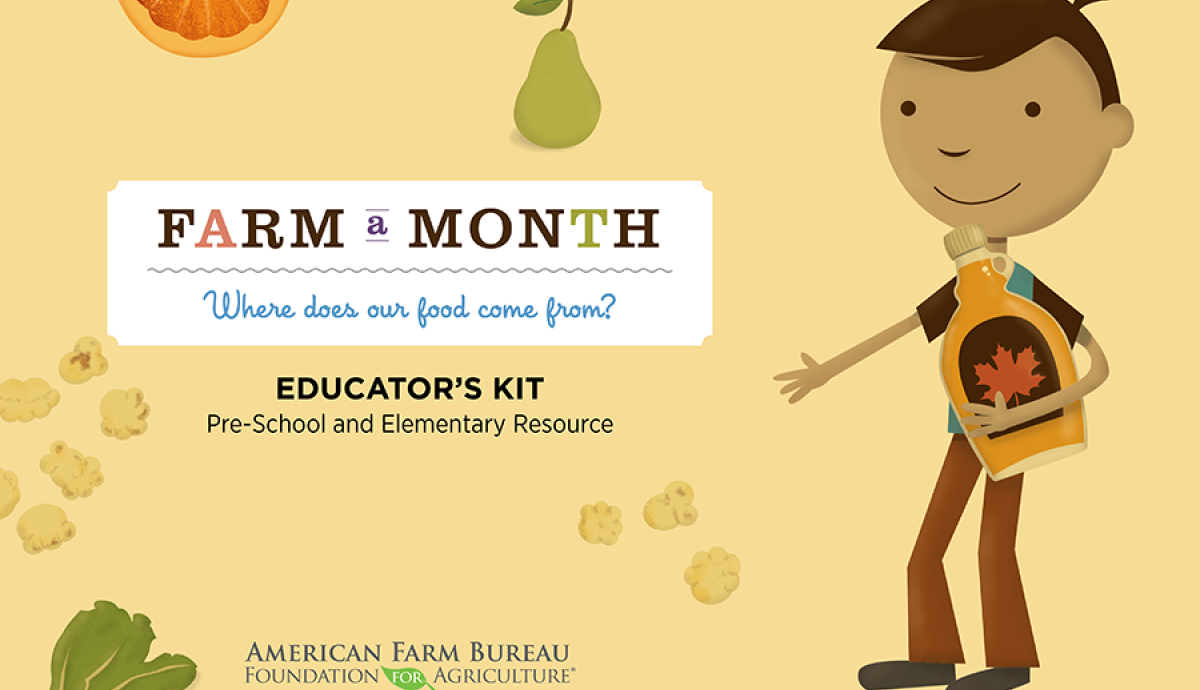Farm a Month Resource Lets Students "Meet" a Farmer
Where does our food come from? Who grows it? Farm a Month is 12 hands on lesson plans, 12 letters from real farmers, and 1 whole year of learning about agriculture!

"Farm a Month: Where Does Our Food Come From?" is a new learning kit for pre-K to first-grade students.
The Farm a Month kit provides an exciting way for teachers, families and classroom volunteers to engage preschool and elementary-aged students in agricultural-based lesson plans throughout the year. The kit was developed with the goal of helping foster conversations about where food and fiber comes from.
Premiere educational resources like the Farm a Month kit are an outstanding jumping-off point for young learners. But there is nothing quite like meeting a farmer face-to-face. We encourage educators and parents to also contact their local county Farm Bureau to connect with farmers and ranchers in their area.
Farm a Month kits are equipped with 12 activities/lesson plans, each focusing on a different commodity: maple syrup, popcorn, peaches, pears, apples, oranges, lettuce, grapes, cheese, pumpkins, turkeys and cranberries. Suggested snacks and related books to read are included for each activity.
Activities can be done at any time during the year and completed in any order. For students not in school year-round or for home-schoolers, setting up a farm-learning schedule would work well with the kits – 'Farm Fridays' or 'Meet a Farmer Mondays' are just a couple of options.
A 36" x 24" map of the United States and reusable stickers are included in each kit to reinforce geography as students learn about where different foods are produced. Each activity also includes a "Meet a Farmer" feature, with stories about life on the farm from people across the U.S.
The Farm a Month kit is available for purchase for $25 online at http://bit.ly/FarmaMonth










